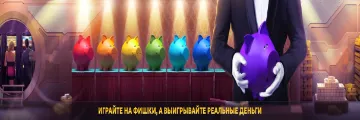Play at the official Vavada casino in India
One of the best-known online casinos, Vavada com launched in 2017. Overall, the site is available in more than 40 countries (CIS states, parts of Europe, Africa, and Asia) and supports 20 languages (English, Russian, French, Spanish, etc.). It’s fully legal and secure — backed by a Curaçao license, data encryption (SSL certificates), and two-factor authentication (2FA). Game fairness is monitored using RNG, and many slots offer high RTPs, which give gamblers a decent chance of winning.
Reviews from real players of Vavada
Over the years the operator has built up a positive reputation. Plenty of players leave feedback about how the site works and what it offers.
Customers often highlight the following in their reviews:
- a wide range of entertainment;
- a variety of payment options;
- a good selection of bonuses;
- 24/7 customer support;
- three separate jackpots up for grabs.
Despite these positives, users note a few downsides: withdrawal limits — typically up to 1,000 USD; no phone support option; and high wagering requirements on bonuses (from х20 to х35). Players in some countries are unhappy about brand blocks, but many appreciate that the list of working mirror sites is regularly updated.
Key differences between the original casino and scammers
Unlike unlicensed sites that disappear once players deposit money, The company follows clear operational rules. The platform requires all players to undergo identity verification (KYC) before significant withdrawals. While sometimes inconvenient, this procedure is a hallmark of legitimate gambling businesses and helps protect both the operator and the user from fraud.
The company also provides transparent information about its registration, licensing, and data protection policies. Its privacy policy states compliance with international standards, confirming that user data is collected and handled under regulated conditions.
How Vavada casino compares to fraudulent sites:
| Aspect | Original | Scam |
|---|---|---|
| Licensing | Licensed in Curaçao | No license or fake numbers |
| Payments | INR accepted, UPI & PayTM supported | Hidden or unreliable methods |
| Security | KYC/AML checks required | No verification, withdrawals often blocked |
| Transparency | Published policies on privacy and responsible gaming | No public terms or policies |
Play online slots through the currently working mirror
Because governments in many countries take a hostile stance toward the iGaming industry, operators are not allowed to run their platforms locally. As a result, access to many gambling resources is either restricted or completely blocked. For example, gambling laws prohibit operators from offering such services directly. To bypass these restrictions, Vavada uses a special tool — a working mirror site.
A mirror is essentially a copy of the original casino, hosted on a different server. The main difference lies in the domain name (instead of “.com” you may see “.new,” “.pro,” etc.). The layout, features, and functions remain identical to the main site. This allows players to keep using the casino 24/7 without interruptions. Login credentials are the same — your username and password work across both versions because the database is shared.
It’s important to note that mirrors don’t last forever. Typically, they get blocked within about 30 days, and gamblers need a fresh link. To make life easier, you should know where to find updated links. Common ways include: searching through Google, Bing or Yandex; contacting customer support; subscribing to social media updates; browsing gambling forums and communities; or checking partner ads and promo posts.
Register and log into your account
Anyone over 18 can sign up. All details provided must be accurate, and creating multiple accounts is prohibited. To register at Vavada:
- Go to the platform and click “Register”.
- Enter your login details (email address or phone number) and create a password.
- Choose your currency (RUB, USD, EUR, TRY, etc.).
- Read and agree to the Terms & Conditions.
- Complete registration by clicking the confirmation link sent to your email or entering the SMS code received on your phone.
After registration, log into your profile and fill in additional details such as full name, residential address, gender and more. This helps recover your account quickly if login issues ever occur.
Verification isn’t mandatory, but to unlock all features without restrictions, players can pass KYC. For that, simply provide a scan of a passport, driver’s license, ID card or another valid document. Documents can be submitted via support or uploaded through the “Verification” section in your profile.
Sports betting
Sports betting was added to the vavada casino in 2024. Today, the section covers 40 disciplines, including kabaddi, football, horse racing, biathlon, volleyball, darts, cricket, rugby league, futsal, boxing, basketball and more. In total, there are nearly 3,500 matches available. The most popular markets are football, table tennis, volleyball, basketball, hockey and, of course, cricket — a favorite among Indian players.
Each event offers anywhere from 2 up to 350+ betting markets, including:
- Correct score.
- Double chance.
- Player injuries.
- Half-time performance.
- Fouls.
- Handicap.
- Totals.
- Time of goals.
- And many others.
You can place bets pre-match or live. Around 90% of events are streamed live as they happen. Bet slips can contain single selections or combine multiple picks into accumulators and system bets — up to 30 events per slip. Odds for even matchups typically range from 1.85 to 1.9.
Download the app or play the casino through the browser version
For convenience, Vavada offers both a mobile app and a mobile-friendly website. This is perfect for players who don’t want to stay tied to a PC and prefer full access anytime, anywhere.
The mobile site looks and functions almost exactly like the desktop version. Simply open the portal in any smartphone browser, and the portal will automatically adjust to your device. The main difference is layout: mobile has a vertical menu, while desktop is horizontal. On mobile, key buttons (login, support, deposit) are grouped together, whereas on desktop they’re spread out. Otherwise, functionality is identical.
The brand also developed apps for both Android and iOS. To install:
- Contact support and request the download link, or find it in the site footer.
- Download Vavada the installation file.
- Install on your phone (note: you may need to allow “unknown sources” in your settings).
- Log into your account.
Key advantages include: staying logged in without re-entering credentials, push notifications sent straight to your phone, and the same design as the mobile site. All features are preserved, making this one of the most convenient ways to play.
Bonuses and promo codes
The bonus system is arranged so that every client receives a reward. Available at the club are: a welcome deposit bonus, deposit promos, no-deposit registration bonus, promo codes Vavada, loyalty program and cashback. Each offer has its own terms and conditions, described under the T&C tab.
- Registration bonus. Clients who create an account receive 100 FS in the slot Great Pigsby Megaways. The wager on the free spins Vavada is x20, and 14 days are given to complete it.
- Cashback. For visitors who actively place bets, there is a 10% cashback. To receive it, you simply need to lose more money than you win within a month. Otherwise, cashback is not provided. The wagering requirement is set at x5 the bonus amount. The rule is valid for 7 days.
- Deposit bonus Vavada. As soon as a gambler opens an account, he only needs to make a deposit and collect 100% of the amount. Freebets are credited for deposits from 90 INR. The maximum reward is 1,000$. Wagering is set at x35, with 14 days allowed to complete it. Bets are only open in the “Slots” section.
- Loyalty program. For regular clients the club has a VIP program with different levels. To participate, you need to place bets for a certain amount within a month. By actively betting, you advance through the system and achieve higher statuses. In total, there are 6 ranks, each giving rewards such as increased withdrawal limits, a personal support assistant, and new tournaments.
| Status | Monthly betting volume | Wagering |
|---|---|---|
| Newbie | 0 | 5 |
| Player | 900 | 5 |
| Bronze | 15,000 | 5 |
| Silver | 240,000 | 3 |
| Gold | 480,000 | 3 |
| Platinum | 3,000,000 | 3 |
Casino games at Vavada
The brand’s entire game collection consists of 6000 releases. Among them are slots, table games, crash, instant, card machine, and live. They were created by 46 companies. Among the developers are NetEnt, BTG, RealPlay, Playtech, Red Tiger, ELK, Endorphina, Pragmatic Play, Octoplay, BetGames, Play’n GO. The average RTP is 97%, and limits range from ₹0.9 to ₹9000. In some slots, bets up to 1,000 USD are possible. Many games can be played for money or in demo mode.
Available slot machines
Among slots, classic machines dominate, but new ones are added to the library Vavada every week. The “Slots” tab is the largest gaming section, with 5000+ titles available. The most famous online slots include:
- Dead or Alive 2;
- Gates of Olympus;
- Sweet Bonanza;
- Minotaur;
- The Dog House;
- Big Bass Bonanza;
- and others.
All games differ in themes: from sea motifs to Egyptian, treasures, space, fruits, etc. Many include bonus features: Megaways, clusters, respins, cascades, free spins, Wild/Scatter symbols and much more.
Play at the live casino Vavada
The game collection is broad and varied, with over 5000 releases. The catalog includes 500+ live titles. At these tables, real users play, and the session is conducted by a real dealer. Players watch the game in real time on screens, and communication is possible through chat. Live games recreate the atmosphere of a physical casino, delivering unforgettable emotions and a chance at jackpots.
In the “Live” tab there are different releases: cards, shows, table games, etc. Some of the most popular options include:
- Adventures Beyond Wonderland.
- Big Bad Wolf.
- Sweet Bonanza Candyland.
- Mega Wheel.
The main menu has a search bar for live games. Favorite titles can be added to “Favorites.” Sorting by provider, novelty and popularity is also available.
Take part in tournaments
The platform allows participants to enjoy not only slots, table games, the sportsbook, live and other traditional options, but also tournaments. There are several types of competitions, differing by the goals set for gamblers:
- win the biggest amount without jackpots;
- collect the maximum sum from spins;
- with free spins hit the biggest prize;
- earn more points than other participants by winning spins with x100 odds.
The availability of tournaments Vavada depends on the loyalty program rank: the higher it is, the more opportunities open up. The prize pool depends on the type of tournament, number of players and other factors. Usually it ranges from $100 to $12,000. Cars are also raffled in addition to money.
Player support on the platform
The support Vavada service works 24/7: specialists have no breaks or days off. Requests are accepted continuously through three key channels:
- Chat on the platform.
- By email.
- Through Telegram chat.
Response time varies from 30 minutes to 24 hours by email. In chat the waiting time is much less: from 30 seconds to 15 minutes. Communication is available in Hindi, English, and Russian.















